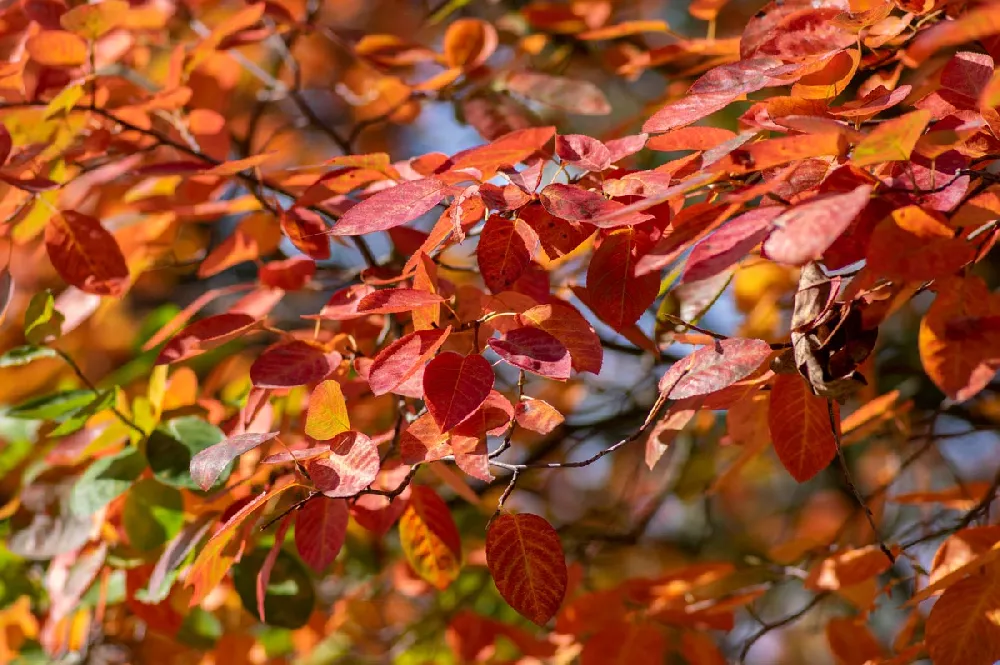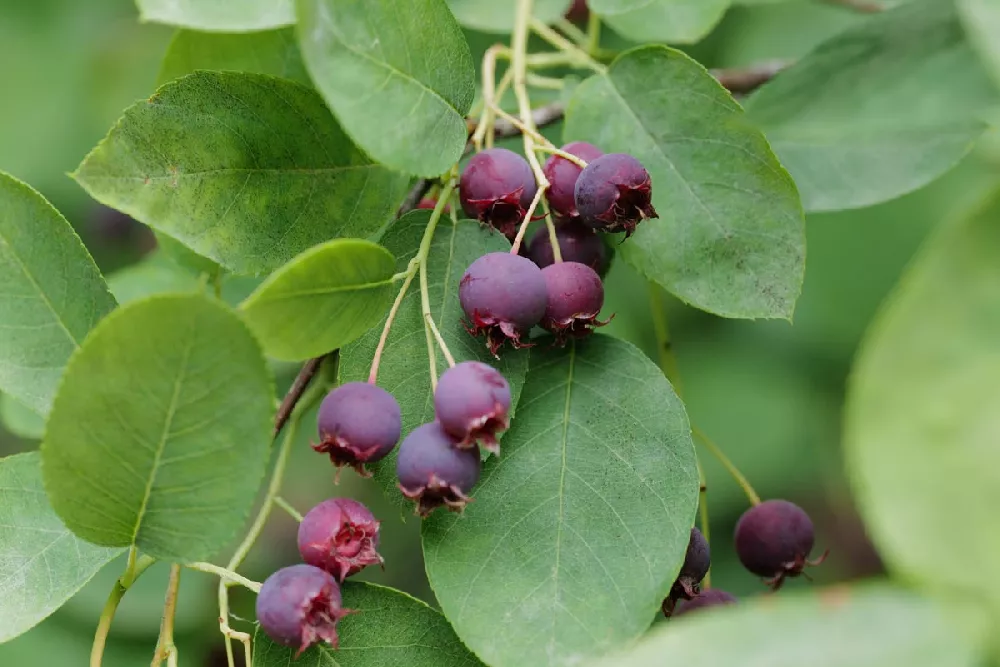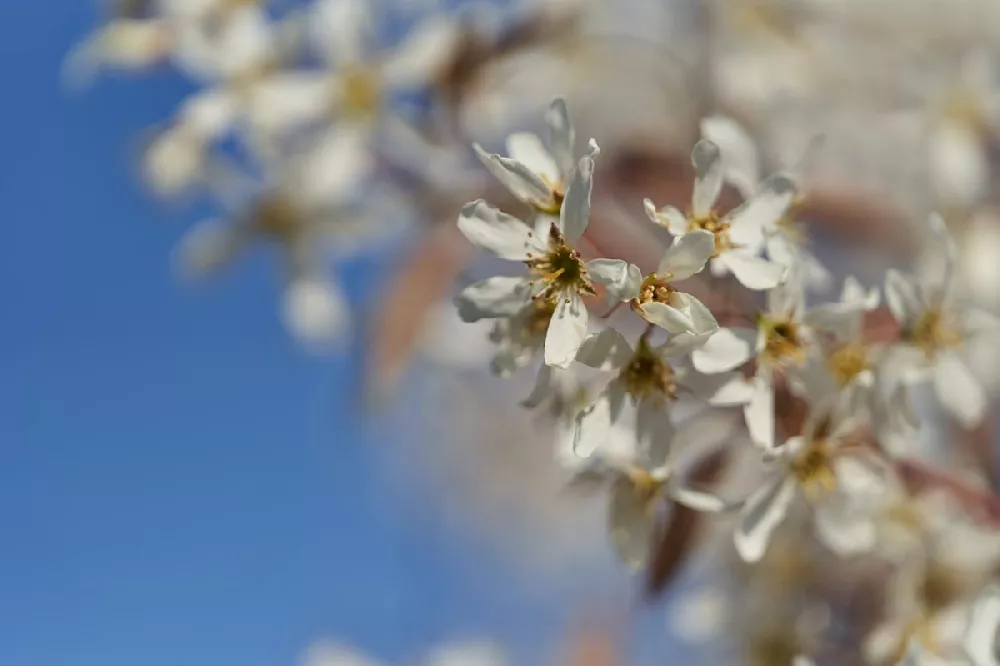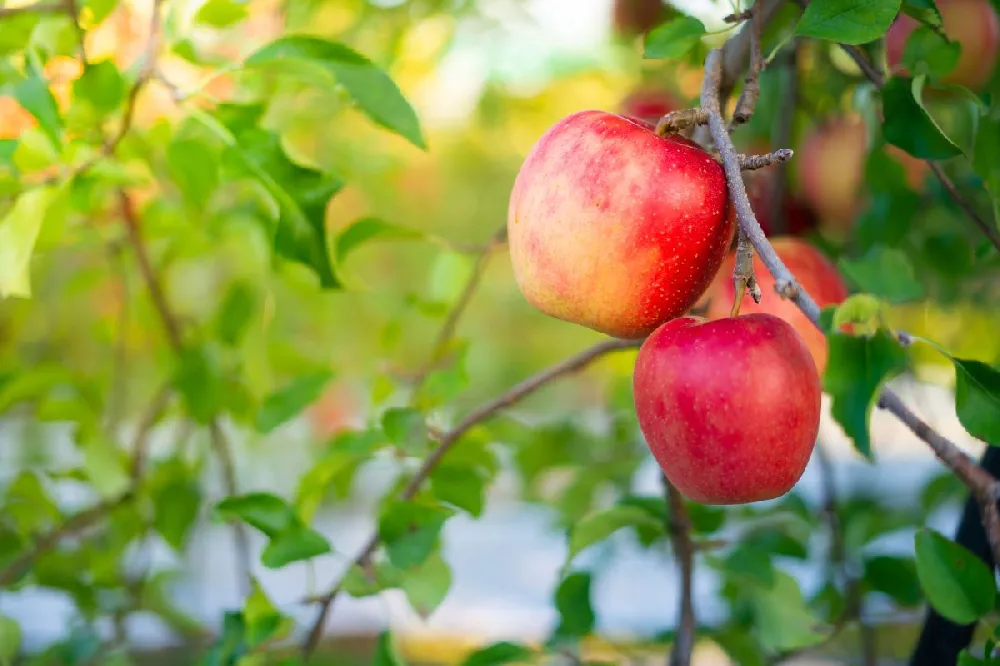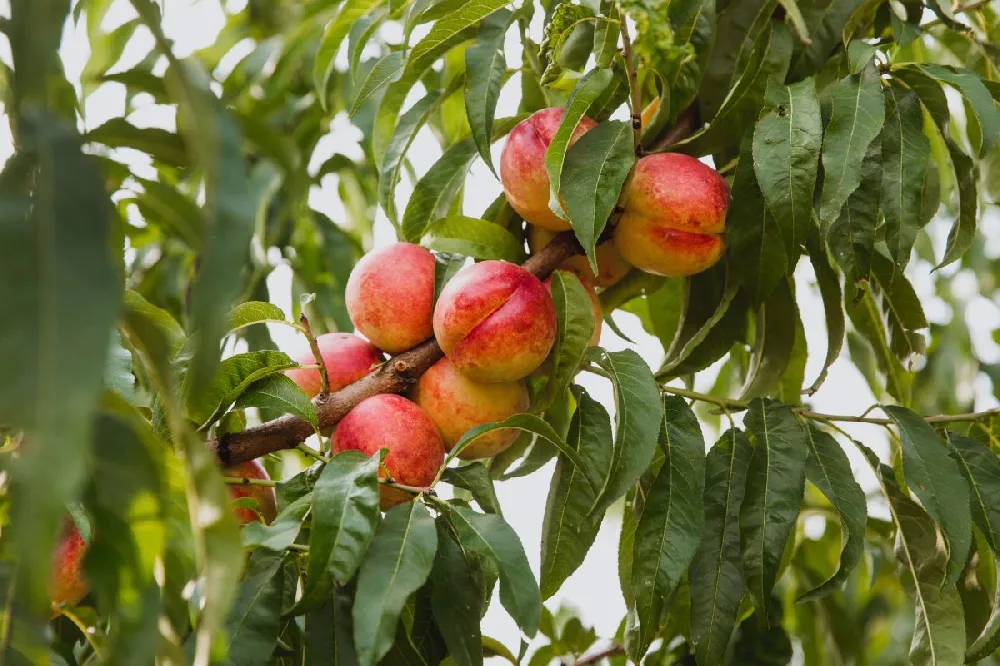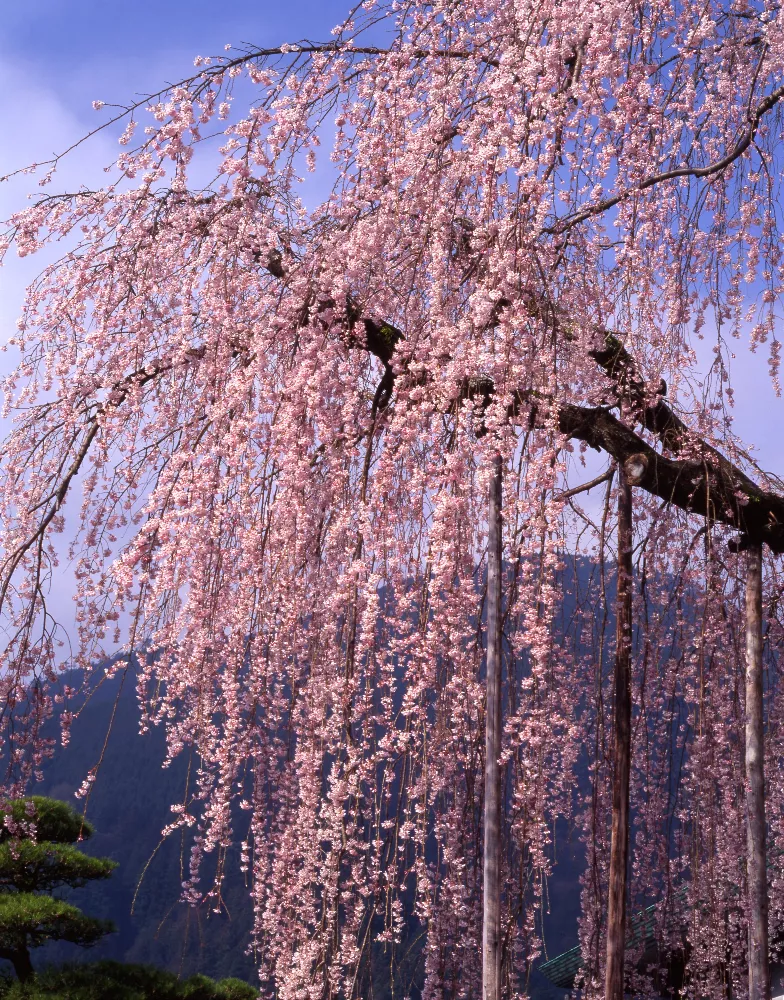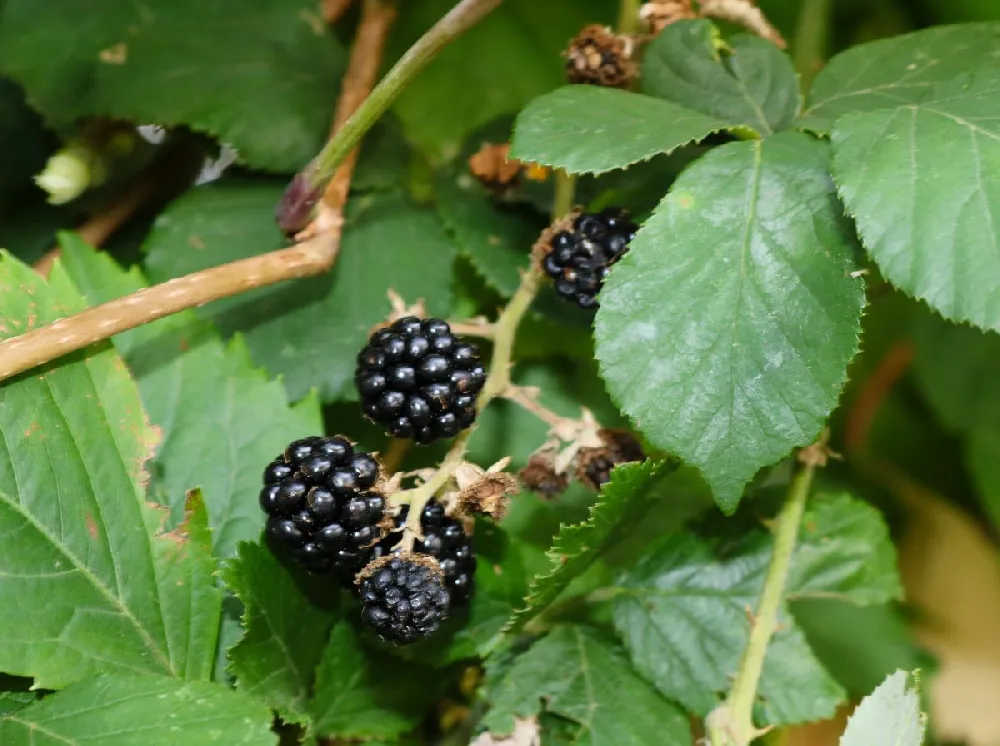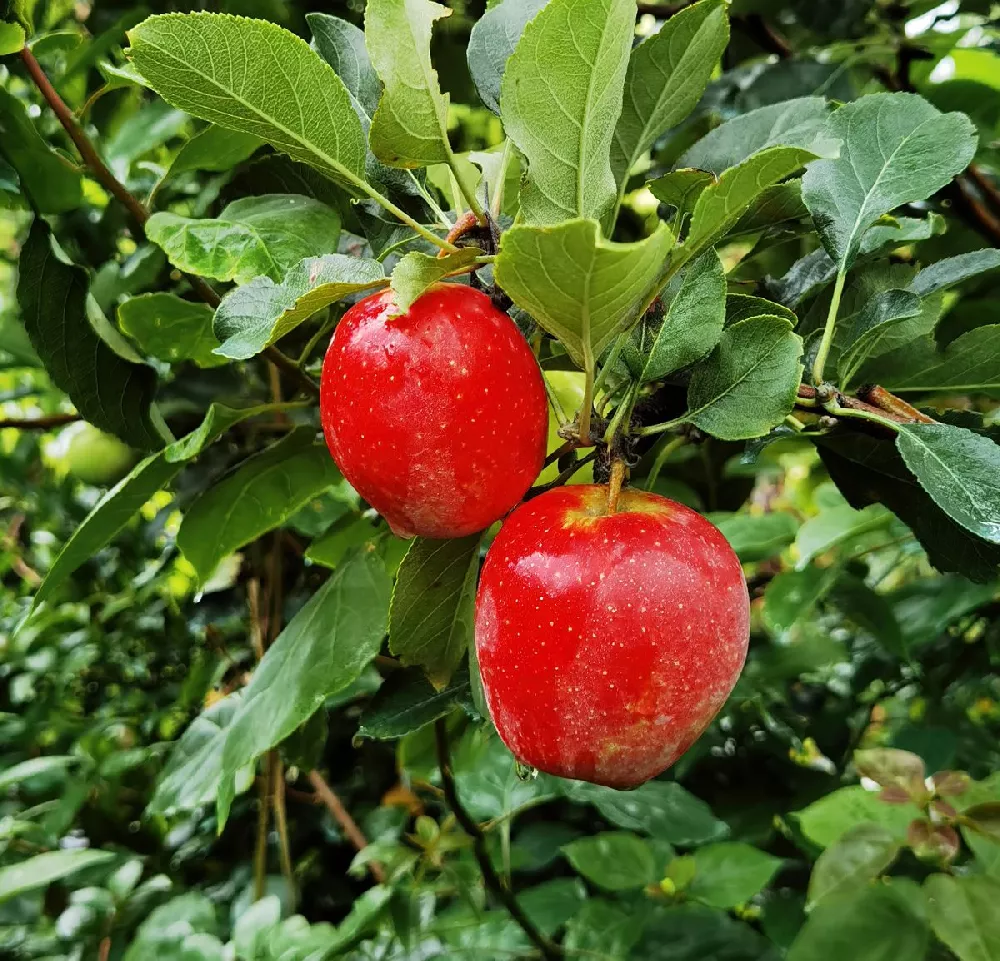- Home >
- Ornamental Trees >
- Autumn Brilliance Serviceberry Tree
Autumn Brilliance Serviceberry Tree for Sale
- Ships in 1-2 days
- 1-Year Warranty Eligible
- Pots or accessories are not included unless specified in the product options.
Shipping Details:
Once your order is shipped, you’ll receive an email with a tracking number and estimated delivery date. Most orders ship immediately, but some items are seasonal and may only ship in spring or fall. These products are noted on the website.
If you like color in your garden, you'll love the Autumn Brilliance serviceberry tree, or, to give it its formal name, Amelanchier x grandiflora 'Autumn Brilliance.' This small (15 to 25 feet at maturity) tree or large shrub welcomes spring with a plethora of small white flowers in spring. In summer, purple-blue fruits attract both avian and human attention. Fall brings a brilliant show of red and orange leaves — so impressive that they give the cultivar its name. To make it even more appealing, Autumn Brilliance grows throughout nearly the entire U.S., and its easy-care nature makes it a natural for cottage gardens and front yard displays. Here are a few more reasons to love the Autumn Brilliance serviceberry tree:
- It can be grown as either a single-trunked small tree or a large multi-stemmed bush.
- It can be used as a specimen plant or as part of a hedge, or it can be naturalized in the garden.
- Native to the U.S., it is a wildlife magnet for pollinators and songbirds.
Plant Care
Sunlight

Serviceberry trees thrive in full sun to partial shade. Give them at least four hours of direct light a day.
Watering
Water newly planted trees every few days until established; then cut back to once a week.
Fertilizing

Fertilize every six weeks throughout the growing season with a balanced product designed for landscape trees.
Planting and Care
Planting instructions
Site your serviceberry tree in a spot that gets good sunlight for at least four hours a day, in soil that drains well. Unpot the sapling and tease out any encircling roots, which can girdle the tree and slowly kill it. Dig a hole that’s as deep as the root ball and twice as wide. Throw a few handfuls of well-rotted manure or compost in the hole, and place the sapling on top of it. Fill in around the tree with good-quality topsoil, tamping down as you go to avoid air pockets. Water thoroughly. Place a 2- to 3-inch layer of an organic mulch, such as bark chips, around the root zone, taking care that it does not touch the trunk.
Watering and nutrients
When newly planted, water your Autumn Brilliance serviceberry tree every few days, stopping when the water begins to pool around the root zone. Once the tree is established and you see signs of robust growth, taper back to a once-a-week watering. A mature tree may only need water during very hot weather or droughts. Fertilize your serviceberry tree during the growing season with a balanced, slow-release product that’s designed for landscape trees and shrubs. Follow package directions, tapering off during the winter.
Pollination
Serviceberry trees are monoecious, meaning that a single plant has both male and female reproductive parts. Thus, you can have fruit even if you have only one tree — although you may see an increased yield if you have more than one. Bees do the heavy lifting of pollinating the myriad flowers that the serviceberry puts forth every spring.
Pruning
There are a few pruning tasks that come with your Autumn Brilliance serviceberry. First, if you wish to grow your plant as a single-trunk tree, clip off any suckers that sprout from the base of the trunk whenever you see them. You can also prune at any time of the year to remove dead, damaged, or diseased branches, as well as those that are rubbing against each other. To shape the tree, prune in late winter before bud break or in autumn.
Pests, diseases, and animals
Serviceberry trees are generally healthy plants without a long list of pests and diseases that prey on them. They may occasionally experience insects such as aphids, bark beetles, and flatheaded borers. A well-maintained tree should be able to fend off any attacks, but an organic insecticide can be used, or you can release beneficial insects such as ladybugs. Diseases that may appear on your serviceberry include entomosporium leaf spot, fire blight, and rust. Rust and leaf spot are fungal diseases. Cut out infected areas, and use a fungicide to mitigate damage.
Harvesting
The Autumn Brilliance Serviceberry tree’s fruits will ripen in late June through July in most regions. Wait to harvest until two-thirds of the fruits are soft and a deep blue in color. The fruits are easily damaged and are best harvested by hand early in the day when it is cool and dry. They will continue to ripen after picking, and are best stored in the refrigerator and used within a week.
Achieving maximum results
Although they are relatively care-free, Autumn Brilliance serviceberry trees, like most fruit trees, benefit from judicious pruning. The trick to proper pruning is to take it slowly and to step back frequently from your work to assess the tree as a whole. When you are pruning for shape in spring or fall, one of the considerations you should have in mind is opening up the center of the canopy so that air and light can get in and benefit the whole tree. When making a pruning cut, it’s best to cut the branch back to a lateral branch, rather than just trimming off a few inches of new growth. Place your clippers just outside the branch collar, where the secondary branch meets with a larger one. Make sure the cut is clean, without accidentally peeling off bark or leaving a frayed edge to the cut.
FAQs
What can serviceberry fruit be used for?
Serviceberry fruits taste somewhat like strawberries and blueberries, and they are delicious right off the tree. Note that the sweetest fruits will be those that have turned a dark purple-blue in color. Use the fruit as you would any berries. Serviceberries make an excellent pie, and can be used in ice cream, desserts, pancakes, and for jam or jelly. They can also be used to make fruit wine.
Are serviceberry trees invasive?
These native American trees are not at all invasive. They are not likely to spread from a single tree, and they have small root zones that allow you to plant shade-loving plants such as hosta underneath them. This makes them a valuable addition to the cottage garden, where they can be a central focus surrounded by smaller flowering plants.
Are serviceberries messy?
Most gardeners would tell you no, for the simple reason that serviceberry fruit is beloved by birds, and very few of the berries make it to the ground before they are eaten. In fact, if you wish to harvest the tree's fruits yourself, you may have to net the tree to keep the birds away. Serviceberry trees are deciduous, so you will need to rake up fallen leaves in late fall, but they are not a particularly messy tree.
Compare Similar Products
You can't add more Product Name - Product size to the cart.
OK